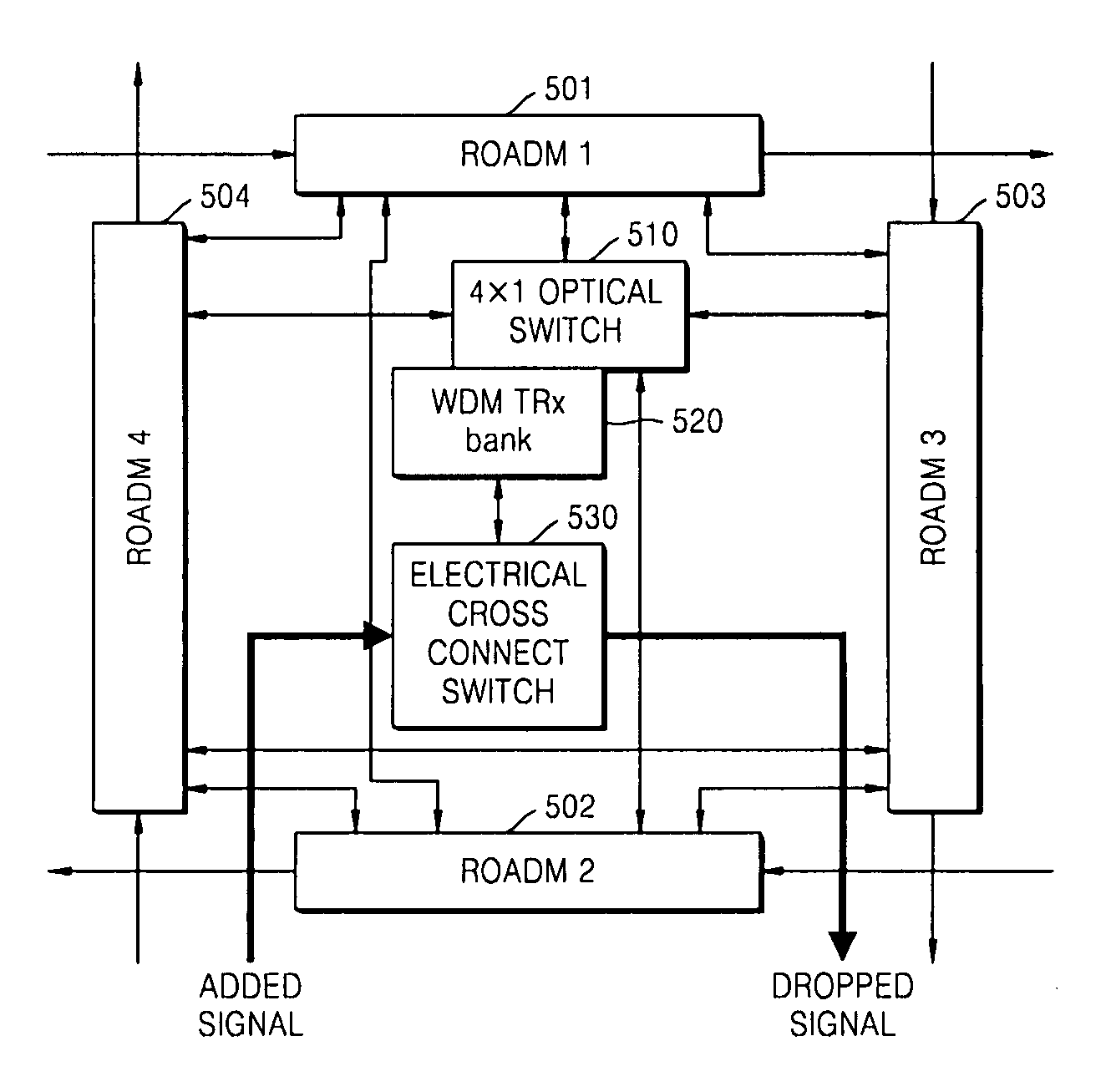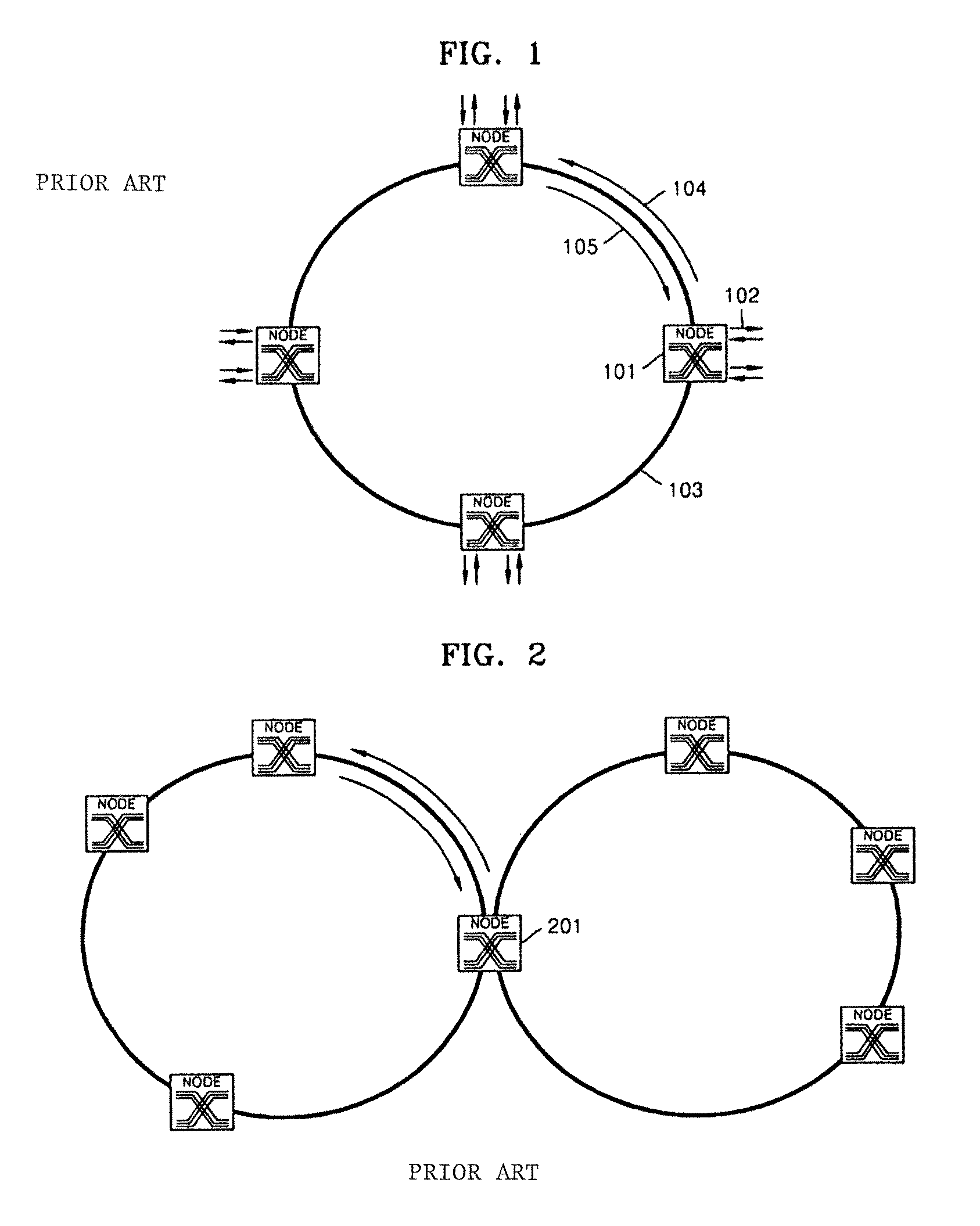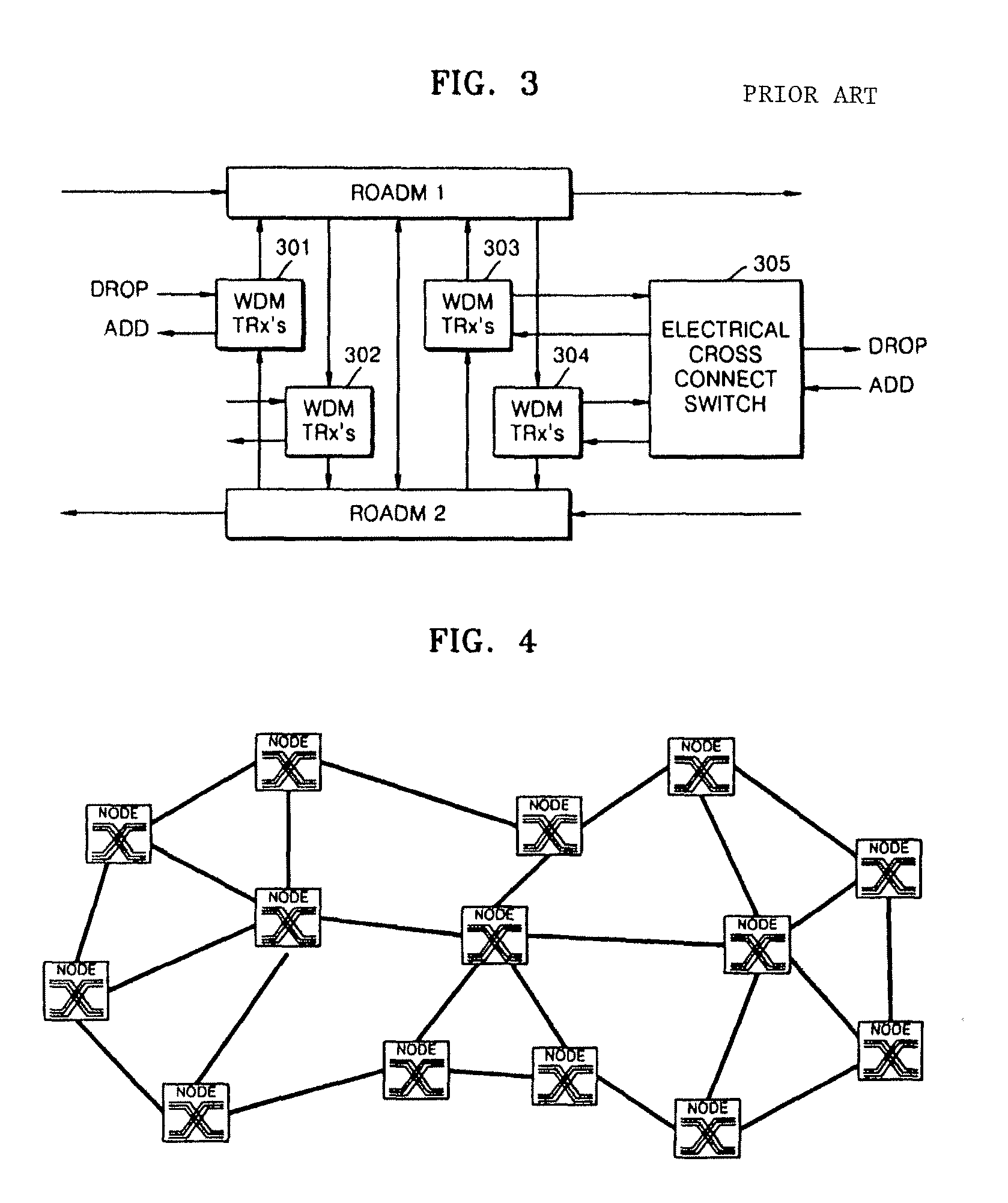Optical node for mesh-type WDM optical network
a technology of optical network and optical node, which is applied in the field of optical node, can solve the problem of inability to distinguish wavelength channels in the above manner, and achieve the effect of reducing the number of wdm optical transceivers
- Summary
- Abstract
- Description
- Claims
- Application Information
AI Technical Summary
Benefits of technology
Problems solved by technology
Method used
Image
Examples
Embodiment Construction
[0031]Hereinafter, preferred embodiments of the present invention will be described in detail with reference to the attached drawings. Like reference numerals in the drawings denote like elements. When it is determined that the detailed descriptions of known techniques or structures related to the present invention depart from the scope of the invention, the detailed descriptions will be omitted.
[0032]FIG. 4 is a schematic diagram illustrating a mesh-type optical network according to an embodiment of the present invention. Since the network may include 2 to 8 or more inputs and outputs, the structure of the node may be complicated. Accordingly, in the present invention, there is provided a node structure capable of supporting a mesh-type network, which has an economical advantage since the mesh-type network can support optical fiber inputs and outputs from various directions and remarkably reduce the number of the WDM optical transceiver TRxs.
[0033]FIG. 5 illustrates a structure of ...
PUM
 Login to View More
Login to View More Abstract
Description
Claims
Application Information
 Login to View More
Login to View More - R&D
- Intellectual Property
- Life Sciences
- Materials
- Tech Scout
- Unparalleled Data Quality
- Higher Quality Content
- 60% Fewer Hallucinations
Browse by: Latest US Patents, China's latest patents, Technical Efficacy Thesaurus, Application Domain, Technology Topic, Popular Technical Reports.
© 2025 PatSnap. All rights reserved.Legal|Privacy policy|Modern Slavery Act Transparency Statement|Sitemap|About US| Contact US: help@patsnap.com



